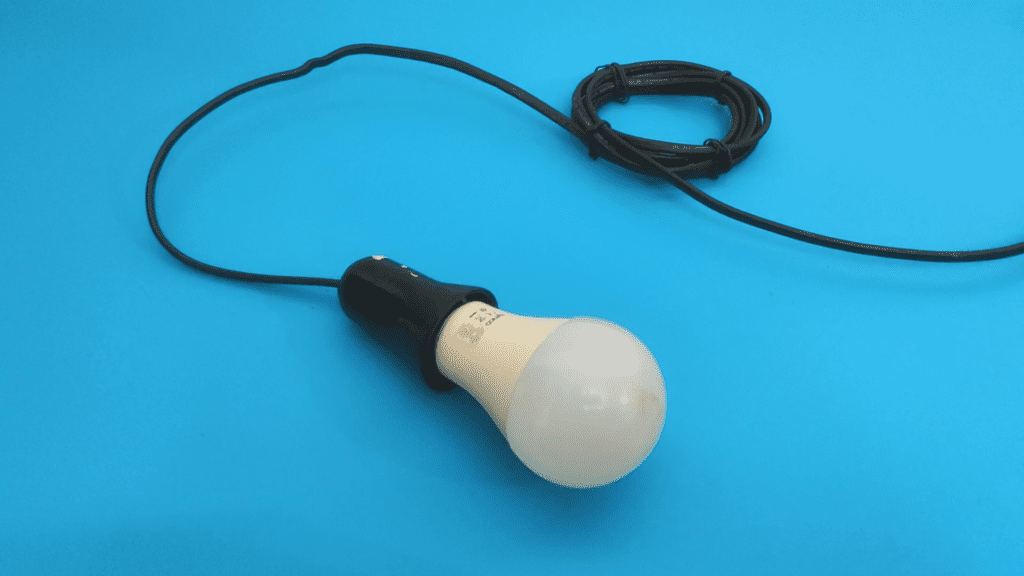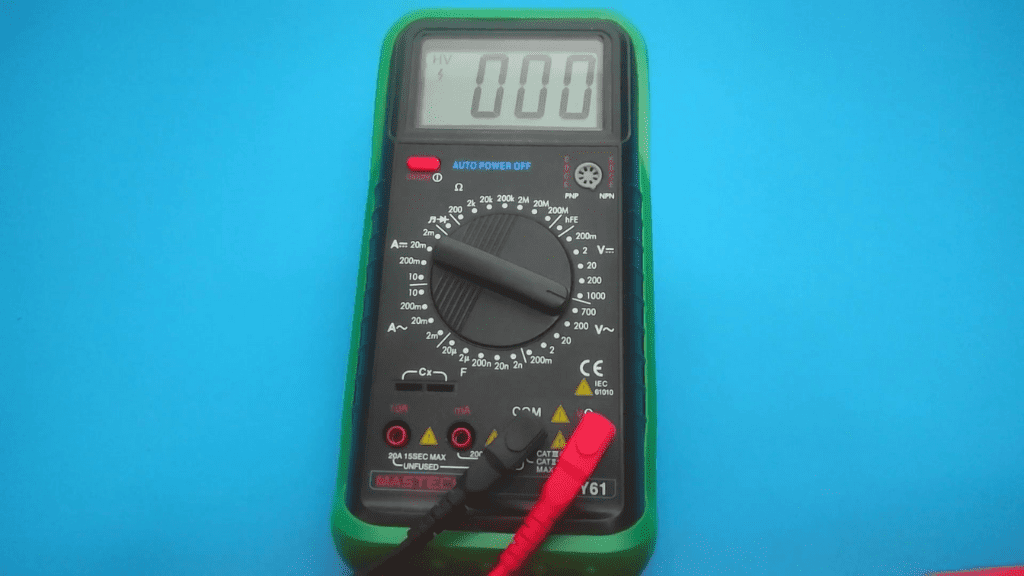How To Test A Light Socket With A Multimeter
So your lightbulb fails to come on and you decide to buy a new one.
You install this new lightbulb and it still doesn’t come on.
Well, now you just have a feeling that the light socket has developed a fault.
However, how do you test light sockets?
This article answers this question, as it provides information on what light sockets are made of and how to run quick tests simply with the use of a multimeter.
Let’s get right in.

What Is A Light Socket
The light socket is the part of a lamp or light post that holds the lightbulb.
It is a component made of plastic and/or metal that the light is hooked or screwed into.
How Does A Light Socket Work
The light socket is made up of two primary contact points.
The wires that supply electrical current to the lamp are connected to a metal component at the inner bottom of the socket (first contact).
This is usually a flexible brass tab or just some metal welding.
Your lightbulb is also held in place by a silver (metal) shell on the inner side of the light socket, and this is either a screw thread or pinhole (second contact).

Either way, it is made of conductive metal and helps complete the circuit.
If there is a problem with any of these, the light socket doesn’t work.
A multimeter is an incredible device for testing a light socket and furthermore diagnosing other electrical parts.
How To Test A Light Socket With A Multimeter
Set the multimeter to AC voltage in the 200 range, place the black probe on the metal socket shell (where the bulb screws or hooks into), and place the red probe on the metal tab at the inner bottom of the light socket. The multimeter reads between 110 and 130 if the light socket is working well.
Further explanation on the steps to take will be provided.
- Take Safety Measures
To test if your light socket is working properly, you need current to be flowing through its circuit.
This means that you have to take precautionary measures against shock hazards.
The most important measure here is to wear insulated rubber gloves and make sure your hands or any part of your body are not wet.

- Prepare For Light Socket Test
With the light socket test, you either have your socket already detached or still in the ceiling.
If your socket is still connected to the wiring in the ceiling, it is safer and more comfortable that you put out the power supply and detach it.
Connect wires to the terminals of the light socket and look for a power source to plug them into.
You may get a power source that is separate from your home electrical system, as this is safer.
The most important thing is that enough current runs through the light socket to determine if it works or not.
- Confirm There Is Power Supply
A voltage detector is great for this. Simply touch the metal tab at the inner bottom of the socket with the voltage detector.
If a light comes on, then there is current in the socket.
Now you proceed to the multimeter.
- Set The Multimeter To AC Voltage
Home appliances, including light bulbs, make use of alternative current (AC voltage).
This means that you need to turn your multimeter dial to the AC voltage setting represented by either “VAC” or “V~”.
To get the most accurate readings, you set it to the 200VAC range.

This is because light bulbs typically run on 120VAC rather than 240VAC or higher, like other larger appliances.
- Place The Multimeter Probes On Contact Points
Now, you place the red probe on the metal tab receiving current from the wires and place the black probe on the metal casing holding the light bulb in place.
Make sure none of these are touching each other.
- Evaluate Results
The optimal current to expect from the light socket with this test is 120VAC.
However, a reading between 110VAC and 130VAC still means that the light socket is in good condition.
If you get a reading out of this range, it is regarded as too high or too low.
You either change your light socket or check whether your power source is supplying the right amount of voltage.
Our video on testing light sockets with a multimeter is an excellent visual guide you may follow:
Testing For Continuity Within Light Socket
Another way to test if your light socket is good or not is to run a Continuity test on it.
A continuity test helps to reveal if there is a short or open-loop within the circuit.
It also helps you to ultimately determine whether the problem is from the light socket or the power source.
- Disconnect Light Socket From Power Supply
You don’t need current going through the light socket to carry out the continuity test.
Detach the light socket from the ceiling wires or any other power supply.
- Set Multimeter To Continuity Mode or Ohms
The continuity mode of your multimeter is the most appropriate for this step.
If your multimeter does not have a continuity mode, the Ohms setting is also effective.
- Place Probes On Contact Points
Now you place the multimeter probes on the different contact points in the light socket.
Place the red probe on the metal tab that receives current and ground the black probe on the metal holding.
- Evaluate Results
If the multimeter beeps or presents you with a reading close to zero (0), the light socket is good.
If it doesn’t beep or you get an “O.L”, very high, or “1” reading, then the light socket is bad and needs to be changed.
These readings represent an open-loop within the circuit.
Conclusion
After running these two tests, you should have spotted where the problem is from.
If the lightbulb still doesn’t come on with the light socket, you may replace the bulb.
Alternatively, you check the socket for rust on the metal components. Use a rag or toothbrush soaked in isopropyl alcohol to clean these.
Frequently Asked Questions
How Many Volts Does A Light Socket Have?
Within a home fixture, a light socket is expected to have about 120 volts (AC). If you want to test this with a multimeter, set the dial to the range closest to 120VAC.
Does A Light Still Have Power When Switch Is Off?
No, as the power passes through the switch before the light socket. However, if the power passes through the light socket before the switch, there will be current in it.
What Causes Power To Light Socket But No Light?
If the supply to your socket is okay but you don’t get light from it, then the power supply is not good enough, the light socket is bad, or the light bulb being used is damaged.
